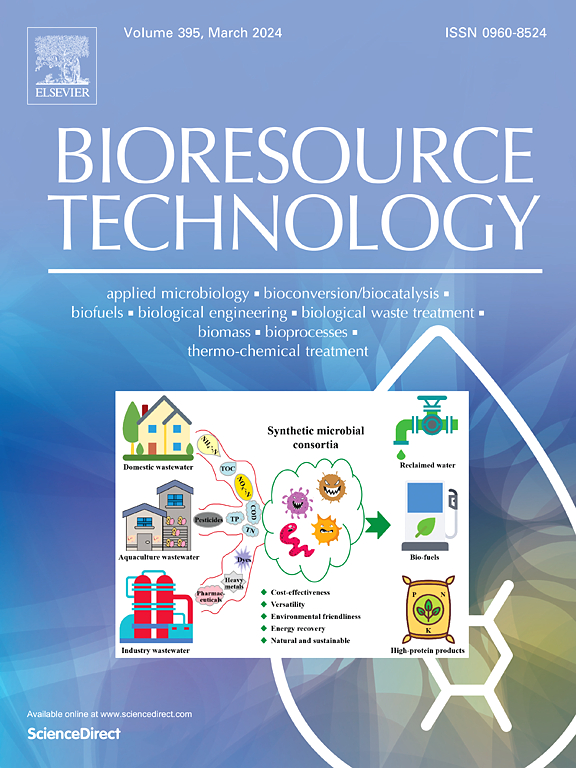“一带一路”倡议中的微藻生物炼制:绿色增长的机遇。
IF 9
1区 环境科学与生态学
Q1 AGRICULTURAL ENGINEERING
引用次数: 0
摘要
在全球能源转型和气候变化的大背景下,微藻产业凭借其节能减排和资源循环利用的优势,成为推动绿色发展的战略路径。作为“一带一路”倡议的主要倡导者,中国越来越多地将绿色发展纳入合作框架,促进微藻技术在“一带一路”沿线国家的应用,为实现环境和经济目标做出贡献。本文综述了微藻技术在生物能源、高价值产品开发和环境领域的进展。这篇综述与现有研究的不同之处在于,它将微藻生物精炼的技术进步与一带一路框架系统地联系起来。报告考察了整个生物精炼链——从种植到产品增值——同时强调了每个阶段的改进措施,包括降低成本的混合种植系统,提高产量的先进提取方法,以及优化资源效率的综合生物精炼模型。一项技术市场匹配分析进一步表明,虽然生物燃料面临高需求但技术成熟度有限,但虾青素和EPA/DHA等高价值产品与当前市场增长表现出更强的一致性。未来应着力建立联合试点设施,统一绿色贸易标准,加强“一带一路”多边合作。通过将技术创新与国际合作相结合,微藻生物精炼可以成为可持续经济转型的关键驱动力,并为实现全球低碳目标做出贡献。本文章由计算机程序翻译,如有差异,请以英文原文为准。
Microalgae biorefinery in the belt and road initiative: opportunities for green growth
In the context of global energy transformation and climate change, the microalgae industry has emerged as a strategic avenue for promoting green development, driven by its energy conservation, emission reduction, and resource recycling advantages. As a key advocate of the Belt and Road Initiative (BRI), China has increasingly integrated green development into its cooperation framework, fostering the application of microalgae technology in BRI countries and contributing to achieving both environmental and economic goals. This paper reviews the advancements in microalgae technology within bioenergy, high-value product development, and environmental sectors. This review differs from existing studies by systematically linking technological advances in microalgae biorefining with the BRI framework. It examines the entire biorefinery chain—from cultivation to product valorization—while emphasizing improvement measures at each stage, including hybrid cultivation systems to reduce costs, advanced extraction methods to enhance yields, and integrated biorefinery models to optimize resource efficiency. A technology–market matching analysis further reveals that while biofuels face high demand but limited technological maturity, high-value products such as astaxanthin and EPA/DHA show stronger alignment with current market growth. Future efforts should focus on establishing joint pilot-scale facilities, harmonizing green trade standards, and strengthening multilateral cooperation under the BRI. By combining technological innovation with international collaboration, microalgae biorefining can become a key driver of sustainable economic transformation and contribute to achieving global low-carbon goals.
求助全文
通过发布文献求助,成功后即可免费获取论文全文。
去求助
来源期刊

Bioresource Technology
工程技术-能源与燃料
CiteScore
20.80
自引率
19.30%
发文量
2013
审稿时长
12 days
期刊介绍:
Bioresource Technology publishes original articles, review articles, case studies, and short communications covering the fundamentals, applications, and management of bioresource technology. The journal seeks to advance and disseminate knowledge across various areas related to biomass, biological waste treatment, bioenergy, biotransformations, bioresource systems analysis, and associated conversion or production technologies.
Topics include:
• Biofuels: liquid and gaseous biofuels production, modeling and economics
• Bioprocesses and bioproducts: biocatalysis and fermentations
• Biomass and feedstocks utilization: bioconversion of agro-industrial residues
• Environmental protection: biological waste treatment
• Thermochemical conversion of biomass: combustion, pyrolysis, gasification, catalysis.
 求助内容:
求助内容: 应助结果提醒方式:
应助结果提醒方式:


